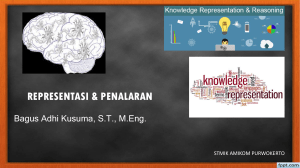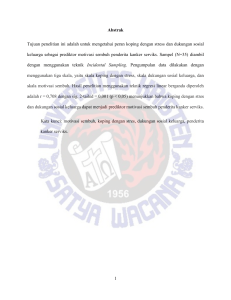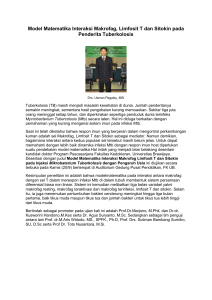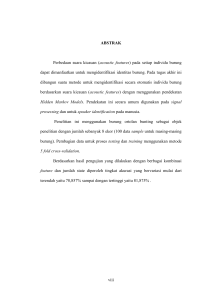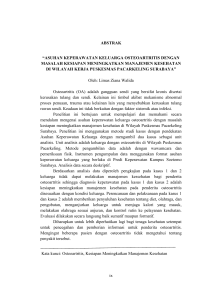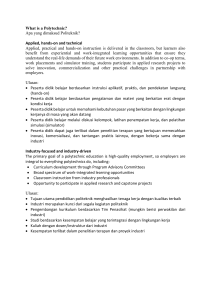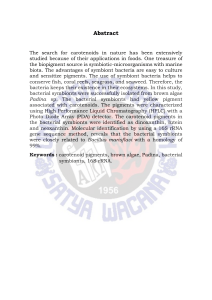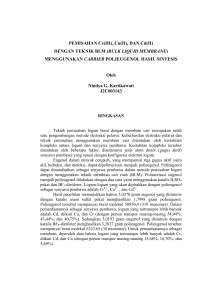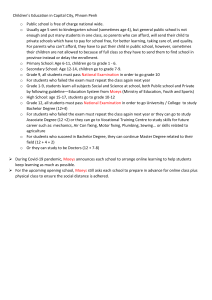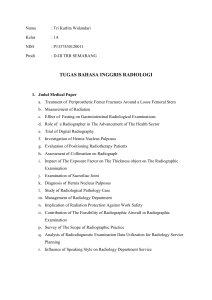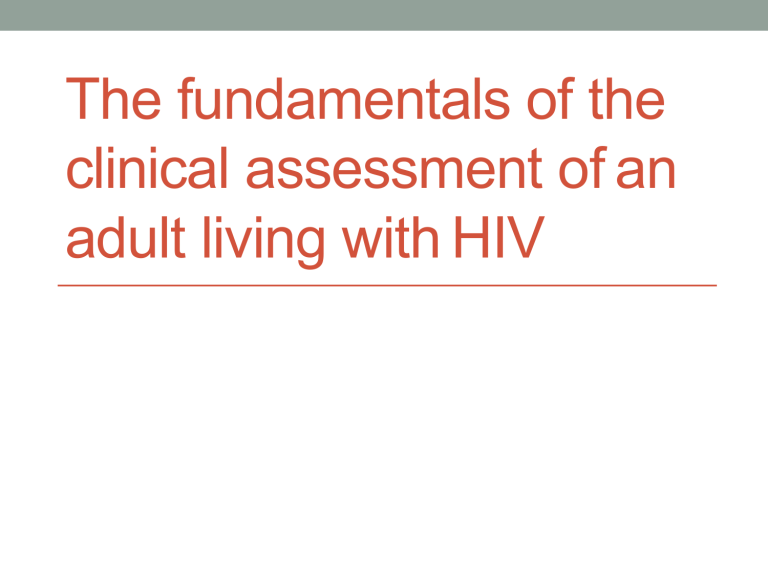
The fundamentals of the clinical assessment of an adult living with HIV 2 Overview 1. Reasons for performing a clinical assessment 2. Approach to a clinical assessment 3. Subjective history taking 4. Objective examination 5. Assessment and plan 6. Summary 1. Discuss why a clinical assessment should be performed on a HIV infected patient. 2. Recognise possible abnormal findings from a subjective history as well as a physical examination. 3. Make an accurate patient assessment and develop an appropriate care plan. 4 Reasons for performing an assessment • Establish baseline data about the patient’s health when diagnosed with HIV and before starting ART. • Identify opportunistic infections that needs treatment. • Identify any other chronic conditions that may develop while a patient is on ART. A study in Pretoria about the quality of services in ART clinics found that a physical assessment was performed in only 41.1% of patients (Kinkel et al. 2012) 5 Approach to a clinicalassessment • Subjective - history taking • Objective - physical examination • Assessment of subjective and objective findings and differential diagnosis • Plan 6 Comprehensive assessment • Subjective: History Taking e.g. previous illness, symptoms • Objective: General assessment, JACCOL, basic data, systems examination, diagnostic tests / investigations • Assessment: Diagnosis & WHO stage • Plan: Drug treatment (prophylaxis, ART), health education, referral / support, follow up 7 Subjective (history taking) Question Main complaint / reason for visit / history of complaint TB screening Rationale Patient’s account; Involve the patient in their care; Take note of the timeline of events Identify TB symptoms; Screen for IPT eligibility STI symptoms Identify STI symptoms; Sexual risk behaviour Family planning Identify if pregnant; Need for pap smear; need for contraceptive 8 Subjective (history taking) Question General symptoms (pain questions if pain is a symptom) Rationale Identify any problems in other systems especially CNS, Mental health GIT, Respiratory Cardiovascular Genitourinary 9 Subjective (history taking) Question Adverse effects Rationale Identify and grade any adverse drug effects Chronic disease screening Adherence Identify co-morbidities that requires comprehensive management Identify any adherence problems Medication and allergies (CTX, penicillin) Identify all medication including other OTC or traditional medication; prior exposure to ART or on ART; Identify possible drug interactions 10 Subjective (history taking) Question Habits and risk factors e.g. alcohol, drugs, family violence Social e.g. family structure, support, employment, disclosure Rationale Identify any issues that needs further counselling and that could impact on the patient’s adherence to treatment Previous significant medical or surgical conditions Identify previous hospitalisations or conditions that may influence the assessment or management plan 11 Routine primary HIV care • Subjective: History Taking e.g. previous illness, symptoms • Objective: General assessment, JACCOL, basic data, systems examination, diagnostic tests / investigations • Assessment: Diagnosis & WHO stage • Plan: Drug treatment (prophylaxis, ART); health education, referral / support, follow up 12 Objective (physical exam and investigations) • General assessment • Basic data • JACCOL • Systems examination • Review of laboratory investigations 13 General assessment • Does the patient look ill or well • Gait and posture • General condition (skin, complexion, weight, clothing) • Vision and hearing • Mental condition – orientation, mood, memory, behaviour • Abnormal – sounds, movements, odours 14 Basic data • Height (first visit) • Weight and BMI and MUAC if pregnant (every visit) – identify weight loss • Respiratory rate • Heart rate • Blood pressure • Temperature • Point of care: Hb, glucose, urine dipstick, pregnancy test when indicated, mantoux/TST 15 JACCOL • Jaundice • Anaemia • Clubbing • Cyanosis • Oedema • Lymphadenopathy & 16 Jaundice • Places to examine: • Bulbar conjunctiva • Hard palate • Skin • Causes are: • Haemolysis of the blood • Obstruction of bile flow from the liver • Hepatocellular failure (due to various factors such as drug induced – EFV / LPV/r / TB drugs) 17 Anaemia • Places to examine: • Pallor of mucous membranes of • • • • the sclerae Buccal mucosa Nail bed Palm creases Spoon shaped nails – chronic (koilonychia) • Causes are: • TB, HIV, drugs (AZT, cotrimoxazole), Vit B12 or iron deficiency 18 Cyanosis • Places to examine: • Blue discolouration of the skin and mucous membranes • Peripheral – extremities • Central – tongue • Causes are: • Lung disease: COPD, pulmonary embolism • Polycythaemia or haemoglobin abnormalities • Cold weather 19 Clubbing • Places to examine: • Change in shape of nails • Fingers - diamond test • Causes are: • Lung cancer; Chronic pulmonary suppuration; Infective endocarditis; Cyanotic heart disease; HIV; Chronic inflammatory bowel disease 20 Oedema • Places to examine: • Press for 3 seconds • Behind medial malleolus of the tibia and distal shaft of the tibia • Causes of pitting oedema: • Cardiac failure • Liver cirrhosis • Nephrotic syndrome • Unilateral oedema may be due to local causes such as venous insufficiency or deep vein thrombosis, Kaposi’s sarcoma 21 Lymphadenopathy • Lymphadenopathy is enlarged lymph nodes. • Compare the one side to the other. • Check for enlargement, mobility and tenderness with palpation. 22 Activity • Break into groups of 2 and practice the examination of the JACCOL 23 Systems examination • Skin • Rashes / lesions / discolouration • Mucosal involvement / blisters 24 Head and neck • Thyroid gland 25 Systems examination • Eye • conjunctivitis • other abnormalities 26 Systems examination • Ear, Nose, Mouth & Throat • Oral candidiasis / ulcers / red throat • Purulent discharges nose / ear • Ear canal or middle ear problem 27 Systems examination • Chest • Cardiovascular • Murmurs • Raised JVP • Respiratory • Asymmetric chest movement • Displaced trachea • Adventitious sounds – wheezing, crepitations, pleural rub • Breasts – males and females abnormalities 28 Systems examination • Genitourinary • Ulcers / warts / discharge / • bleeding • Suprapubic tenderness • Cervical tenderness / abnormality • Inguinal lymph nodes • Abdomen • Tenderness • Rigidity / guarding • Masses • Liver enlargement 29 Systems examination • Musculoskeletal / Neurological • Focal abnormalities / weakness • Peripheral neuropathy • Confusion • Neck stiffness • Abnormal reflexes / tone • Joint / tendon / muscle abnormality 30 Routine primary HIV Care • Subjective: History Taking e.g. previous illness, symptoms • Objective: General assessment, JACCOL, basic data, systems examination, diagnostic tests / investigations • Assessment: Diagnosis & WHO stage • Plan: Drug treatment (prophylaxis, ART); Health education, referral / support, follow up Diagnosa Keperawatan Ketidakefektifan bersihan jalan napas berhubungan dengan mukus berlebih Ketidakseimbangan nutrisi kurang dari kebutuhan tubuh berhubungan dengan gangguan pencernaan Diare berhubungan dengan infeksi Nyeri akut berhubungan dengan agen cedera biologi Kelelahan berhubungan dengan kondisi fisik kurang Risiko infeksi berhubungan dengan imunosupresi Ketidakefektifan bersihan jalan napas berhubungan dengan mukus berlebih NOC – Status pernapasan: kepatenan jalan napas NIC – Manajemen jalan napas – Manajemen batuk – Monitor pernapasan Ketidakseimbangan nutrisi kurang dari kebutuhan tubuh berhubungan dengan gangguan pencernaan NOC – Status Nutrisi: Asupan nutrisi NIC – Manajemen gangguan makan – Manajemen nutrisi – Bantuan peningkatan berat badan Diare berhubungan dengan infeksi NOC – Kontinensi usus – Eliminasi usus NIC – Manajemen diare Nyeri akut berhubungan dengan agen cedera biologi NOC – Pain control – Pain level NIC – Pain management Kelelahan berhubungan dengan kondisi fisik kurang NOC – Tingkat kelelahan NIC – Manajemen energi Risiko infeksi berhubungan dengan imunosupresi NOC – Keparahan infeksi NIC – Perlindungan infeksi • Kerusakan integritas kulit berhubungan dengan imunodefisiensi NOC – Integritas jaringan: kulit dan membran mukosa NIC – Pengecekan kulit – Perawatan luka – Perlindungan infeksi 37 Documentation • Subjective history – brief summary of main complaint and important history questions e.g. TB and STI symptoms, side-effects, adherence, other illnesses/comorbidities, previous investigations • Objective – General appearance, basic observations, JACCOL, any system abnormalities noted • Assessment – differential diagnosis, WHO stage • Plan – drug treatment prescribed, health education, investigations ordered, referrals made and follow up date. 38 Summary • A good clinical assessment is invaluable, but can take time • Performing a comprehensive assessment at certain times – diagnosis, ART initiation, annually may be more efficient and improve patient outcomes by detecting problems early 40 Thank you. Any questions? • Please complete the questionnaire before you leave
